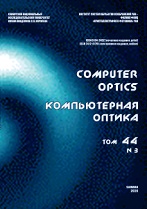|
This article is cited in 6 scientific papers (total in 6 papers)
IMAGE PROCESSING, PATTERN RECOGNITION
Vanishing point detection with direct and transposed fast Hough transform inside the neural network
A. V. Sheshkusab, A. N. Chirvonayaac, D. M. Matveevad, D. P. Nikolaevea, V. L. Arlazarovfb
a Smart Engines Service LLC, Moscow, Russia
b Institute for Systems Analysis, Federal Research Center "Computer Science and Control" of Russian Academy of Sciences, Moscow, Russia
c National University of Science and Technology "MISIS"
d Lomonosov Moscow State University, Moscow, Russia
e Institute for Information Transmission Problems (Kharkevich Institute) RAS, Moscow, Russia
f Moscow Institute for Physics and Technology, Moscow, Russia
Abstract:
In this paper, we suggest a new neural network architecture for vanishing point detection in images. The key element is the use of the direct and transposed fast Hough transforms separated by convolutional layer blocks with standard activation functions. It allows us to get the answer in the coordinates of the input image at the output of the network and thus to calculate the coordinates of the vanishing point by simply selecting the maximum. Besides, it was proved that calculation of the transposed fast Hough transform can be performed using the direct one. The use of integral operators enables the neural network to rely on global rectilinear features in the image, and so it is ideal for detecting vanishing points. To demonstrate the effectiveness of the proposed architecture, we use a set of images from a DVR and show its superiority over existing methods. Note, in addition, that the proposed neural network architecture essentially repeats the process of direct and back projection used, for example, in computed tomography.
Keywords:
fast Hough transform, vanishing points, deep learning, convolutional neural networks.
Received: 11.12.2019
Accepted: 21.07.2020
Citation:
A. V. Sheshkus, A. N. Chirvonaya, D. M. Matveev, D. P. Nikolaev, V. L. Arlazarov, “Vanishing point detection with direct and transposed fast Hough transform inside the neural network”, Computer Optics, 44:5 (2020), 737–745
Linking options:
https://www.mathnet.ru/eng/co843 https://www.mathnet.ru/eng/co/v44/i5/p737
|

| Statistics & downloads: |
| Abstract page: | 104 | | Full-text PDF : | 83 | | References: | 13 |
|



 Contact us:
Contact us: Terms of Use
Terms of Use
 Registration to the website
Registration to the website Logotypes
Logotypes